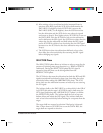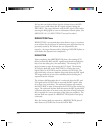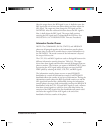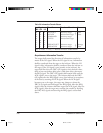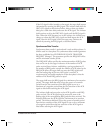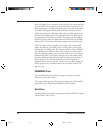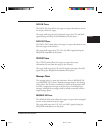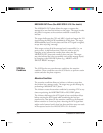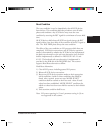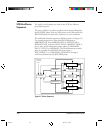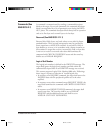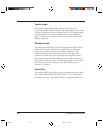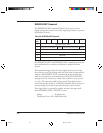
3-24 M3099GX/GH OEM Manual
SCSI Bus
Conditions
MESSAGE OUT Phase (See ANSI SCSI-2 6.1.9.2 for details)
The MESSAGE OUT phase allows the target to request that
message(s) be sent from the initiator to the target. The target invokes
this phase in response to the attention condition created by the
initiator.
The target shall assent the C/D and MSG signals and negate the I/O
signal during the REQ/ACK handshake(s) of this phase. The target
shall handshake byte(s) in this phase until the ATN signal is negated,
except when rejecting a message.
If the target receives all of the message byte(s) successfully (i.e., no
parity errors), it shall indicate that it does not wish to retry by
changing to any information transfer phase other than the
MESSAGE OUT phase and transfer at least one byte. The target
may also indicate that it has successfully received the message byte(s)
by changing to the BUS FREE phase (e.g., ABORT or BUS
DEVICE RESET messages).
The SCSI bus has two asynchronous conditions; the attention
condtion. These conditions cause the SCSI device to perform ceratin
actions and alter the phase sequence.
Attention Condition
The attention condition allows an initiator to inform a target that
the initiator has a message ready. The target may get this message by
performing a MESSAGE OUT phase.
The initiator creates the attention condition by asserting ATN at any
time except during the ARBITRATION or BUS FREE phases.
The initiator shall negate the ATN signal at least two deskew delays
before asserting the ACK signal while transferring the last byte
transferred in a bus phase for the attention condition to be honored
before transition to a new bus phase. Asserting the ATN signal later
might not be honored until a later bus phase and then may not result
in the expected action. See ANSI SCSI-2 6.2.1 for details.
#03.pm5 98.2.22, 1:31 PM24




